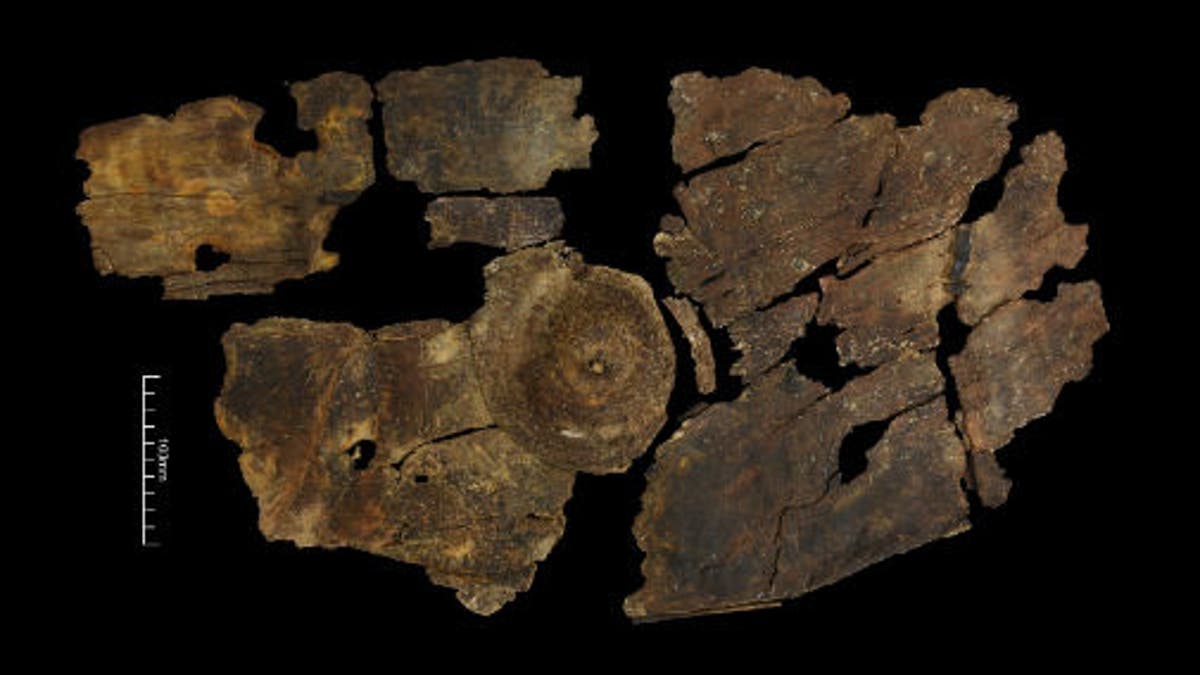Fox News Flash top headlines for May 24
Fox News Flash top headlines for May 24 are here. Check out what's clicking on Foxnews.com
A unique Iron Age shield made from bark provides a fascinating insight into prehistoric weapons technology.
Constructed with wooden laths, the shield is the first of its kind found in Europe, according to the U.K.’s University of York, which has analyzed the artifact.
Radiocarbon dating indicates that the shield was constructed between 395 and 255 B.C. CT scanning and 3D printing have also been used to reveal the shield’s secrets.
FEMALE VIKING WARRIOR'S REMARKABLE GRAVE SHEDS NEW LIGHT ON ANCIENT SOCIETY
The shield was discovered in 2015 by archaeologists from the University of Leicester’s Archaeological Services at the site of Everard Meadows, a food, drink and leisure development near the city of Leicester. The area where the shield was found is believed to have been an ancient watering hole. It is also close to Fosse Way, a well-known Roman road.

The unusual shield is described as the first-of-its-kind found in Europe. (The University of York)
After analyzing the shield, experts believe that it was stiffened with wooden laths, a wooden edging rim and also a woven boss at the center of the shield that protected the user’s handle.
“This truly astonishing and unparalleled artefact has given us an insight into prehistoric technology that we could never have guessed at,” said Michael Bamforth of the University of York’s Department of Archaeology, in a statement. “Although we know that bark has many uses, including making boxes and containers it doesn't survive well in the archaeological record. Initially we didn't think bark could be strong enough to use as a shield to defend against spears and swords and we wondered if it could be for ceremonial use.”
MISSING PIECE OF STONEHENGE RETURNED 60 YEARS AFTER IT WAS REMOVED DURING EXCAVATION
The research revealed that the shield was severely damaged before it was buried, with some of the damage apparently caused by spear tips. “Further analysis is planned to help understand if this occurred in battle or as an act of ritual destruction,” explained the University of York, in its statement.
"It was only through experimentation that we realised it could be tough enough to protect against blows from metal weapons,” said Bamforth. “Although a bark shield is not as strong as one made from wood or metal, it would be much lighter allowing the user much more freedom of movement.”
The shield’s exterior had been painted and scored with a red chequerboard decoration, according to the research.
SCHOOLBOY DISCOVERS LONG-LOST 1,000-YEAR OLD STONE MONUMENTS FROM ANCIENT KINGDOM
The artifact, which has been conserved by the York Archaeological Trust, will now be deposited with the British Museum. “This is an absolutely phenomenal object, one of the most marvelous, internationally important finds that I've encountered in my career,” said Dr. Julia Farley, curator of British and European Iron Age Collections at the British Museum, in the statement.
Other historic sites in the U.K. have been revealing their secrets. A missing piece of Stonehenge, for example, was recently returned 60 years after it went missing during an archaeological excavation.
CLICK HERE TO GET THE FOX NEWS APP
Earlier this year, a 14-year-old schoolboy in Scotland helped uncover long-lost medieval stone carvings in a church graveyard.
Follow James Rogers on Twitter @jamesjrogers

